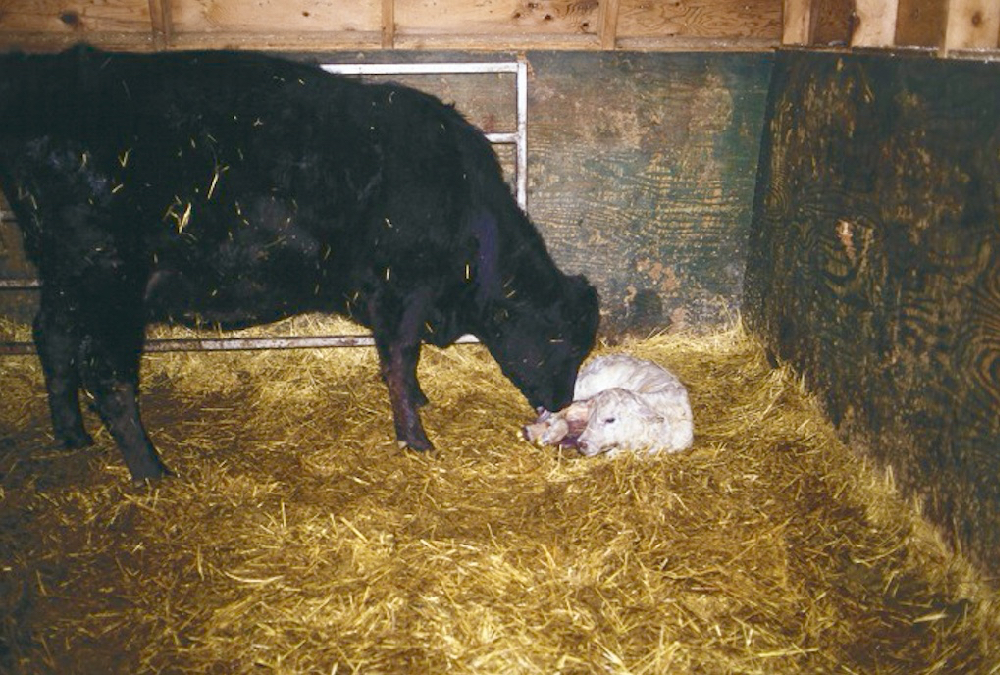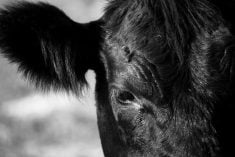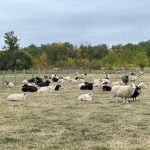The story about leptospirosis started during a dog walk with good friends as part of our daily outing. They knew little about zoonoses and the importance of disease transmission between animals and humans. A recent article on “Leptospirosis” Linda read in an agriculture journal piqued her interest on the diseases shared by humans and animals. Because she biked and hiked extensively, she wondered if Stevie, her Wheatland terrier, could be exposed and if vaccination against leptospira may be in order.
Leptospira species is a potential pathogen in humans, dogs, rodents, cattle, horses and swine, plus many other wild and domesticated animals. Symptoms range from none, to mild and severe. Animals can die from leptospirosis. Typically, leptospira causes mild, flu-like symptoms. Weil’s disease, the acute, severe form of leptospirosis, causes jaundice, kidney failure and internal hemorrhage. Leptospirosis often lasts several weeks.
Several leptospira species/serovars exist, such as interrogans, hardjo, pomona and canicola.. Each species has a particular predilection for a domestic animal, presenting a range of clinical symptoms. The disease is mainly spread through exposure to the urine of infected animals. Transmission to humans happens through contact with the urine or contaminated soil and water.
Read Also

Building demand together: The impact of Canada’s beef import levy
The beef import levy has become a central tool for ensuring balance in Canada’s beef industry
Transmission to humans happens through contact with the urine or contaminated soil and water. Leptospirosis is more likely to affect people who:
- Work with animals, such as dairy farmers or veterinarians
- Work outdoors, such as mine or sewer workers
- Swim or kayak in contaminated bodies of water
- Camp outside
The bacteria usually enter the body through open wounds or mucous membranes, such as the eyes or mouth. It then enters the bloodstream and spreads throughout the body. In some cases, leptospirosis causes no symptoms at all. Mild leptospirosis symptoms in people include fever, coughing, headache, muscle pain, rash, vomiting, eye irritation and stomach pain. Symptoms can progress to jaundice, kidney failure, liver failure, nonspecific bleeding, heart arrhythmias and meningitis. It’s important to seek treatment as soon as possible to prevent these issues.
Leptospira is commonly found in cows, pigs, horses, raccoons, porcupines and dogs.
Cattle
Several pathogenic strains of leptospira bacteria infect ruminants. Some are specifically adapted to cattle, whereas others are incidental but can still cause disease. Clinical signs may include abortions, weak calves, and blood-tinged milk in nursing cows. Diagnosis can be based on culture, serology or PCR assay. Treatment and control may include the use of antimicrobials, vaccination, and how cattle are managed. Wildlife that carries additional leptospira strains increases exposure to domestic stock.
Dogs
Dogs are susceptible to infection by many leptospiral serovars, with clinical signs of leptospirosis ranging from mild, subclinical infection to acute kidney injury, liver damage, respiratory disease or death. Diagnosis includes serologic testing and identification of leptospira in tissues, blood or urine. Doxycycline is the primary drug used for treatment in dogs, along with appropriate supportive care. Vaccines made up of a combination of serovars (multivalent) are available for prevention. Dogs are the maintenance host for Leptospira interrogans serovar canicola, and before widespread vaccination programs, this serovar remained widespread in Canada and the U.S.
Knowledge of the infecting serovar in dogs is essential for epidemiological studies and vaccine development. Presently, there is still confusion surrounding the story about whether specific serovars are associated with specific clinical signs of leptospirosis in dogs and little published evidence to guide therapy. It is, however, extremely important for veterinarians to maintain a high degree of suspicion about leptospirosis, because of its zoonotic nature and wide range of clinical presentations in dogs. Any age, breed or sex of dog is susceptible. The risk of cattle dogs acquiring infection associated with the nature of their work is higher than most.
Acute kidney injury has been the most common presentation of canine leptospirosis in recent years. Dogs that survive acute kidney injury may return to normal or progress to chronic kidney disease. Leptospirosis should also be considered in any dog with previously diagnosed chronic kidney disease. Liver disease can accompany acute kidney injury in dogs with leptospirosis accompanied by icterus (jaundice, yellowing). Muscle pain, stiffness, weakness, trembling or reluctance to move often occurs, accompanied by bleeding disorders. Vaccines provide good protection from disease for at least one year.
Horses
Clinical findings include abortion, renal failure, and recurrent uveitis (eye infection). Antimicrobials can be given in acute infections, but may not be helpful for recurrent uveitis. Vaccines against Leptospira pomona often help prevent the spread of infection in infected horses and invasion of kidneys, placenta, fetus and eye.
Genetic factors are likely involved in the disease process, helping to explain why only some horses infected with leptospira develop uveitis (eye infections). Appaloosas and warmblood breeds are thought to be genetically predisposed. Warmblood breeds with leptospira-associated uveitis commonly develop signs as young adults. Equine recurrent uveitis (or moon blindness), following leptospira infection is the most common cause of vision loss in horses. Scientific reports suggest that one per cent or more of horses will develop equine recurrent uveitis through their lifetime and that 50 per cent or more of these cases are caused by leptospira.
The Center for Disease Control lists veterinarians and animal caretakers as being at an occupational risk for leptospirosis, and it recommends decreasing or avoiding contact with the urine of infected animals.
– Dr. Ron Clarke is a veterinarian who consults on animal health and disease issues and writes for agricultural and veterinary audiences.

















